Main economic indicators
Composition GDP: Services 63%, Manufacturing 20% and Primary 17%,
GDP (PPP): U$S 754 billion (2011)
GDP (PPP) per capita: U$S 18,260 (2011)
GDP, current prices: U$S 470 billion (2011)
GDP per capita, current prices: U$S 11,380 (2011)
Exchange rate: 4,30
International reserves: U$S 46 billion.
Public debt: 49% GDP.
Unemployment rate (2010): 7.3%
GDP growth in 2010: 9.1% (IMF, 2010)
Investment rate in 2010: 24% of GDP (including FDI)
Savings rate in 2010: 22% of GDP
Exports 2010: U$S 81.5 bllion (68.5 billion goods and 13 billion services)
Imports 2010: U$S 70.2 billion (56.4 billion goods and 13.8 billion services)
Argentina is rich in natural resources with a geological and climatic situation particularly suitable for developing forestry, agriculture, mining and fisheries. It also boasts of large renewable and non renewable energy reserves.
Argentina is famous for its agricultural production. With over 55 million head of cattle, Argentina’s beef is renowned around the world. Annual production of cereals and oilseeds and other crops exceeds 100 million tonnes, which makes Argentina one of the main exporters of these products and their derivatives. Between 2003 and 2009 Argentina produced an average of 41,3 million tons of soy, 17,8 million tons of corn, 13 million tons of wheat and 3,6 million tons of sunflower. Argentina has been a leader country in the implementation of direct seeding and is a leader country in the application of biotechnology in agriculture and animal health. One of the country's largest sheep grazing regions, which is also one of the largest regions for growing fruit and vegetables, is found in Patagonia, in the south of the country. The typical farms associated with this production are surprisingly similar to those found in Australia.
Mendoza, Salta and San Juan, among other Provinces, are the centre of wine production. Argentina is the worlds fifth-largest producer of wine and the ninth world largest exporter. Exports are continually growing.
The Andean Mountains provide Argentina with rich mineral deposits. Some of the minerals which are being mined at present are, copper, tin, lead, zinc, gold, silver, molibdeno and uranium. The main exploitation of copper and gold, Minera de la Alumbrera, in the Province of Catamarca, is an Australian venture. Argentina is also one of the world largest reserves of lithium.
Between 2003 and 2009, the manufacturingsector has grown at an year average rate of 7%. The industrial sector includes manufacturing and construction. Among Argentina’s manufactured goods are processed food, textiles, clothing, metallic and non-metallic mineral products, paper, pharmaceutical products, chemicals and petrochemical products, aluminium, steel, cars, electrical machinery and appliances, machine tools, turbines, cranes, agriculture machinery, green energy and technology, biotechnology appliancies, medical instruments, and space and nuclear products. Construction, engineering and consultancy activities have developed to an important stage, extending to the Latin-American market and other countries.
Services
Between 2003 and 2009 this sector has expanded at an year average rate of 7%. Services such as educationa and health have been traditionally of a very high quality in Argentina. Besides this, Argentina is becoming an important producer and exporter of professional and creative services. Argentina exported more than u$s 4.3 billions of professional services in 2009. The production of software has increased 20% annualy between 2003 and 2009 and exports incresed even faster. Regarding the creative services, Argentina is the fourth largest exporter of TV program formats and is one of the three better places to develop and produce ideas, after USA and Great Britain, according to the specialized magazine Gunn Report. Tourism is also a big industry in the country. Argentina receives more than 4 million visitors per year.
Exports
Argentina's exports composition: 35% industrial manufactures, 33% agricultural manufactures, 23% primary products and 9% energy. In 2010, 21% of the exports went to Brasil, 16% to the EU, 11% to Latin America (excuding the Brazil, Mexico and Chile), 9% to China, 8% to NAFTA, 8% to the Middle East, Maghreb and Egypt, 7% to Chile, 5% to Asean and 4% to the rest of the world. Argentine imports composition: 32% came from Brasil, 19% from the EU, 15% from NAFTA, 12% from China, 3% from Latin America (excluding Brazil, Mexico and Chile), 3% from ASEAN, 2% from Chile and 14% from the rest of the world.

